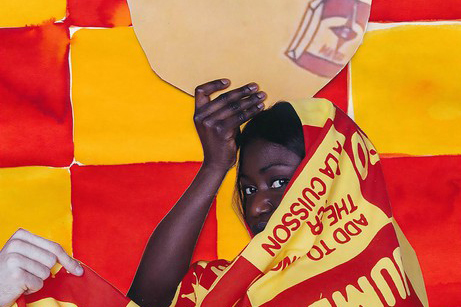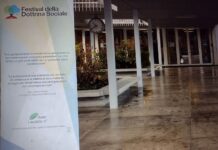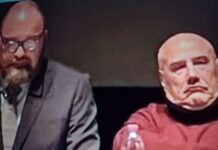It is interesting to see how through photography one can address all the issues that heat up debates about our future. The various photography festivals around Europe put in place a myriad of facets of the various problems. Ecology, world peace, interpersonal and working relationships, migrations. EMOP Berlin takes place in October-November and it is the equivalent of the Photofestival of Milan, which took place in September. An invasion of events that takes the whole city touching on all possible themes, from those on the photographic specific to those on the problems of the most disadvantaged peoples. Since 2004, it is the biggest photographic festival of Germany that, every 2 years, involves museums, cultural institutes, galleries, project spaces, embassies and photography schools with outdoor or museum exhibitions, with individual or group presentations.

So, you go from the exhibition to the Museum of Photography – SMB Art Library Photography Collection (Jebensstraße 2) with ‘photography, Wolfgang Schulz and the photographic scene around 1980’ documenting, through the international art photography magazine, Photography: ‘Zeitschift internationale Fotokunst’, and its publisher Wolfgang Schulz an important period of change in the history of West German photography, to that of Rumänisches Kulturinstitut Berlin (Reinhardtstraße 14) “The Time between” by Romanian photographer Ioana Moldovan documenting the life of five-month-old pregnant Riman who escaped from her hometown of Homs, Syria, because of the bombs, as well as the struggle of refugees for a safer life.
Or at the Collegium Hungaricum Berlin (Dorotheenstrasse 12) ‘Dialektik der Bilder’ (Image dialectic) is an exhibition that examines the development of the Hungarian photographic artistic positions against the background of state socialism and other European and Eastern European realities in the last third of the twentieth century. Equally interesting is to see art publications photographed, catalogues of exhibitions and monographs at the Raum für Zweckfreiheit (Adalbertstraße 71) in ‘Open Book’, ‘Biblio-sculptures’ by Ingo Gerken, a project that uses objects related to a book, creating an intriguing game of changing meaning and reading on different levels. And, always staying on the book, at the Galerie Pugliese Levi (Auguststraße 62) the exhibition ‘Volumes’ by Mary Ellen Bartley presents us photographs which explore the tactile and formal qualities of the printed book and its potential for abstraction. Bartley has carried out projects in artists’ private libraries such as Robert Wilson, Jackson Pollock, Lee Krasner and Giorgio Morandi. As well as a photo of the damaged collection of jazz records of Jackson Pollock.








